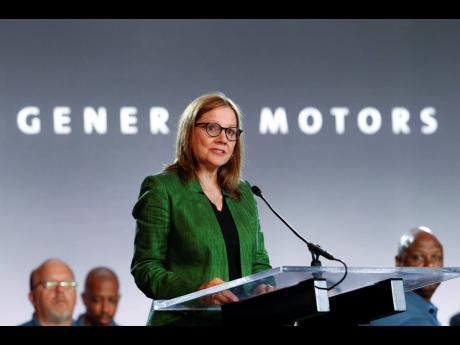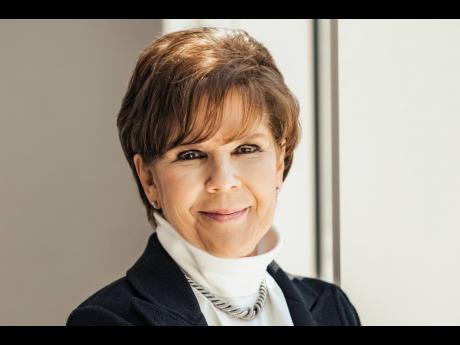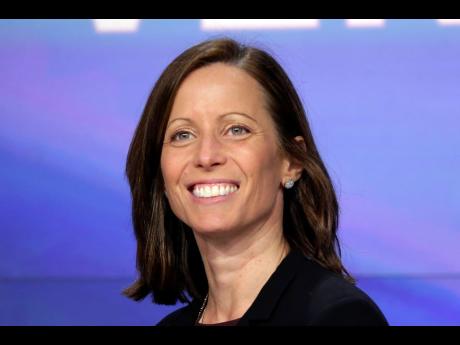Pay for female CEOs rose 26 per cent in 2021, but ranks remain small
Pay packages for the women who run S&P 500 companies jumped in 2021 as the economy recovered and stock prices and profits soared.
Median pay for the women occupying the corner office rose to nearly US$16 million, according to the annual survey done by Equilar for The Associated Press. Still, experts say there’s much more to be done to improve gender diversity in the corporate ranks and close the pay gap between men and women.
Jane Stevenson, vice-chair, Board & CEO Services at organisational consulting firm Korn Ferry said, while it is good that women CEOs’ pay rose, there is still a lot to be done. “I think the danger is to look at those cases of CEOs making more than their peers and see a message about the pay gap being closed – it’s not,” she said.
Of the 340 CEOs in the latest survey of S&P 500 companies, 18 were women, up from 16 in 2020. Profits for S&P 500 companies rose roughly 50 per cent and the index gained about 27 per cent. Because the bulk of a CEO’s compensation is tied to such performance, their pay packages ballooned after years of mostly moderating growth.
Female CEO median pay rose 26.4 per cent in 2021 to US$15.8 million, with 15 of the 18 women CEOs in the survey seeing an increase. Median means half made more than that level, and half made less. That was a bigger jump than that for male CEOs’ median pay, which rose 17.7 per cent to US$14.4 million. The overall median pay increased 17.1 per cent to US$14.5 million.
The few women who are CEOs of the largest companies in the United States typically make more money than their male counterparts. But last year they weren’t close to the top of the leaderboard for pay packages. Last year, the top earning CEO was Peter Kern of Expedia Group, who received a pay package valued at US$296.2 million.
Lisa Su of Advanced Micro Devices was the highest paid woman CEO for the third year in a row, but her compensation, valued at US$29.5 million, ranked just 22nd in the survey. Su’s pay rose 9 per cent from last year. That was partly because of stock and stock options awards, which totalled US$25.1 million as AMD’s stock surged 57 per cent. Her base salary was about US$1.1 million.
Just behind her was Mary Barra, the CEO of automaker General Motors, whose pay jumped 25 per cent to US$29.1 million, including a base salary of US$2.1 million and stock and stock options awards worth US$18.5 million.
Jayshree Ullal, CEO of cloud computing company Arista Networks, saw the biggest jump in salary. Her pay more than doubled to US$16 million, mostly because of stock awards valued at US$15.4 million. Arista’s stock doubled in 2021 on strong demand for its cloud computing products.
The number of racially diverse CEOs is gradually increasing too. According to a survey of companies in the S&P 500 and Fortune 500 by executive recruitment firm Crist Kolder, six had Black CEOs in 2021, 40 had Asian American CEOs, and 20 had Latinx/Hispanic executives leading them.
The Equilar survey includes only CEOs who have served at least two full fiscal years at their companies, in order to avoid the distortions of big sign-on bonuses. The companies must have filed proxy statements between January 1 and April 30.
The criteria left out some women named to the top job in the past two years. Not included are CEOs such as Roz Brewer at Walgreens Boots Alliance, Jane Fraser at Citigroup, Linda Rendle at Clorox, Judith Marks at Otis Worldwide and Reshma Kewalramani at Vertex Pharmaceuticals.
If the ranks of women CEOs are to grow, there needs to be a better pipeline to promote women leaders, said Korn Ferry’s Stevenson.
“Pay tells a story. We have more stories of some women getting ahead,” said Stevenson. “It’s great, but it does not a system make. What we do not have is a systemic path forward for women, generally speaking, in a sustainable way, to be on the path to top roles and top pay.”
Alison Cook, a professor of management at Utah State University who researches gender and diversity in the workplace, said there’s been a recent push to get more women on boards, rather than in top C-suite roles. That might help in the long run, she said.
“Hopefully, the push into the board of directors translates into more women getting to the C-suite pipeline and available to be CEOs,” she said.
AP





